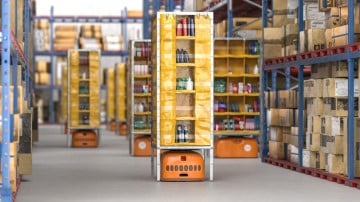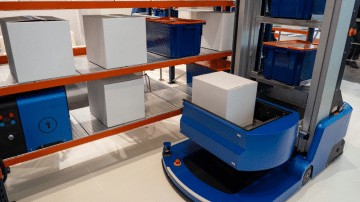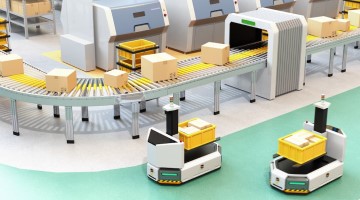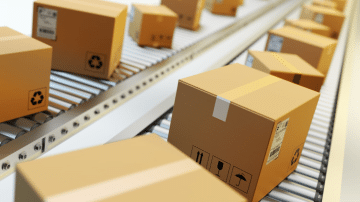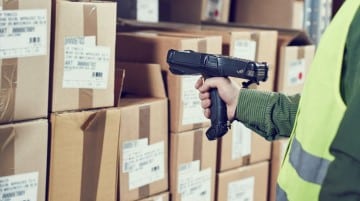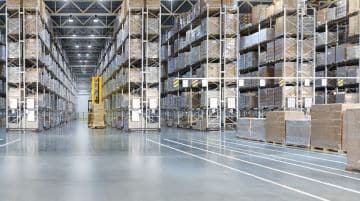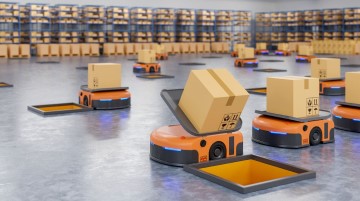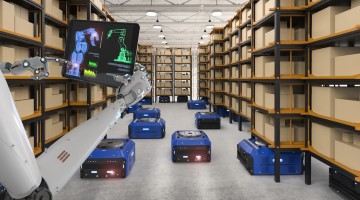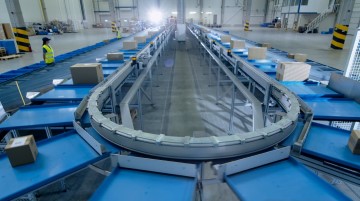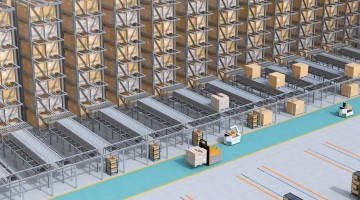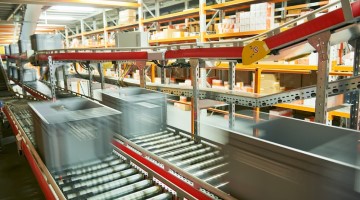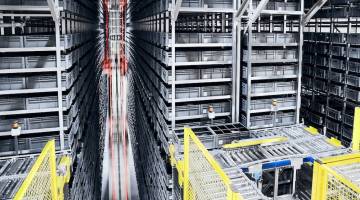Warehouse Equipment & Systems Procurement
Warehouse Consultancy » Warehouse Equipment & Systems Procurement
What is Warehouse Equipment & Systems Procurement
Material Handling Equipment (MHE) and systems procurement is the process of purchasing the necessary hardware or software in a warehouse. The procurement process follows the identification of a requirement that may originate in a warehouse design project, a review of the current warehouse systems capabilities or the replacement of old equipment.
We use our expertise of the market offering and robust tender documentation and process to secure the most appropriate hardware and software for our clients. Our warehouse procurement services include a wide range of hardware and software.
It’s important during tenders and selection processes to be clear about the requirements, shortlist appropriate partners, provide reliable data, regularly check in with vendors and use objective criteria to evaluate each proposal. All these considerations are taken through our robust tender process.
How BoxLogic Can Help
BoxLogic offers flexible support that can provide specific input and steering or extend to full management of the procurement process. After the selection of a partner, we can also provide project management and implementation support.
Project Stage | How Can BoxLogic Help |
|---|---|
Design Validation | Review and validation of your design where we challenge assumptions and make recommendations where required to enhance the solution from a reliability, capacity and cost perspective. |
Supplier Selection Advice | Advice on potential vendors to consider in any tender process, utilising BoxLogic’s extensive knowledge of the market and experience of working with a range of providers to make sure you are speaking to the right companies. |
Tender Documentation | Compilation of a comprehensive tender pack, including operational requirements, design volumes and reference data to provide suppliers a clear understanding of the project objectives, enabling potentially providers with all the information to deliver a well-informed and costed proposal. |
Tender Management | Management of a robust tender process, supplying technical expertise in responding to questions not covered by the tender documentation, reviewing and comparing proposals and establishing a clear and objective selection criterion to select a partner. BoxLogic help you to get all the information needed through supplier presentations, reference site visits, reference customer interview and more. |
Contracting | Expert advice throughout the contracting process to resolve any differences between the vendor’s proposal and requirements of the tender process. We represent your interests, putting in place the framework to align the objectives of supplying and buying party. |
Detailed Design | Work with all parties to convert sales concepts into a final design for build by value engineering and overcoming the inevitable complications that comes with working at a greater level of detail. |
What Can BoxLogic Help Procure
BoxLogic can help your business acquire a wide range of warehouse hardware and software.
Our Process
BoxLogic can support the end-to-end MHE and systems procurement process including the preceding stage of warehouse concept design or design specification of a warehouse management system. We can also support the subsequent stages of project implementation. No two projects are the same and we are flexible in our approach, but an end-to-end process is set out below.
A RFI process prepares the suppliers for an upcoming project opportunity. The documentation provides an overview of the solution requirements and is issued to a long list of suppliers to identify those that are most suitable. The supplier responses are evaluated, and a shortlist of vendors selected for an RFQ process. This allows a vendor to prepare resource in advance of receiving full tender.
The RFQ documents the project requirements in detail with supporting data and drawings provided, where appropriate. It is issued to a shortlist of suitable vendors with the expectation that they provide a detailed solution description with costings. Any questions not covered in the RFQ are answered and vendors engaged throughout. Also known as Request for Pricing or Invitation to Tender.
Leading or supporting the process of selecting a vendor through a tender to achieve a range of fully informed and competitively priced proposals. We use our extensive knowledge of the industry and proven process to inform and support you to make the best long-term partner for your business.
Provision of expert advice from award of a preferred partner through to the contract signature with the preferred partner. The process compares the supplier’s proposal against the issued RFP and preferred form of contract and extends to interrogating the test programme, payment milestones, liquidated damages and more.
Work with the preferred vendor to take the sales concepts and build them into a final design for manufacture. Our valuable experience challenges the integrators designs, value engineering where possible and ensuring that the agreed meets the objectives of the original business case.
Case Study
Find out how we helped our client to select a new forklift truck partner to support its business growth.
Challenge
A leading supplier of recipe kits experiencing rapid growth and expansion of its UK network wanted to nominate a preferred partner of mobile-MHE across its current and future operations. The client wanted support and expertise in running a tender to identify a capable partner.
Project Approach
- Familiarised ourselves with the equipment requirements and quantities of each warehouse operation, capturing key details including aisle widths, pallet load weights, lift heights and other features.
- Compiled a comprehensive tender pack detailing the project requirements across the network for issue to market leading suppliers.
- Provided subject matter expertise to compare vendor proposals on a like-for-like basis, aligning specifications and features where necessary.
- Defined a structured selection process to assess vendors commercial proposals with a balanced scored card to account for pricing and technical differences in proposals.
Results
BoxLogic provided the client with a rigorous and structured tender process to assess a range of competitive proposals fairly. This resulted in the selection of a capable, long-term partner to work with the client on its existing and future warehouse operations.
Other BoxLogic Case Studies
Why Work With BoxLogic
Get a highly skilled and experienced team of consultants to support your procurement process for warehouse hardware and software.
- Deep expertise in material handling equipment and software solutions in the warehouse
- Independent advice and excellent knowledge of capable vendors across a range of complex markets
- Capability to support the end-to-end project from design to procurement to implementation and go-live
- Robust tender methodology to compare different vendors solutions on a like-for-like basis
GET IN TOUCH TODAY
Complete the form and one of our skilled consulting team will be in touch to discuss your warehouse and logistics project today.
Alternatively, give us a call or send an email.
- +44 (0) 118 309 4030
- enquiries@box-logic.co.uk
Frequently Asked Questions
A warehouse will feature a range of equipment depending on the size and maturity of its operation. Even the smallest, manual operations will often contain forklift trucks, pallet racking and shelving. Many will also have some form of Warehouse Management System, which depending on functionality, may use hand-held terminals to perform RF picking.
Medium-sized operations might use conveyors to move product within the warehouse, automated stretch wrappers and operate a wider range of forklift trucks to achieve higher lifts or operate in smaller footprints (e.g. reach, order picker trucks or VNA combi trucks). Depending on the pick and storage profiles, mezzanines or ‘pick towers’ might be installed.
Larger, high-throughput warehouse facilities might use a wide range of material handling equipment and systems. Telescopic conveyors might be used to offload containers. Forklift trucks might be replaced with Automated Guided Vehicles (AGV) or Autonomous Mobile Robots (AMR). Traditional racking or shelving storage could be replaced with Automated Storage and Retrieval Systems (ASRS) and connected to goods-to-person pick stations (G2P). Automated sorters (e.g. cross belt or AMR) might be used to sort parcels by carrier
Larger operations will also be more likely to use a wider variety of warehouse systems or functionality. A Warehouse Control System (WCS) manages the flow of goods across automated MHE. High vehicle throughputs might justify a Yard Management System (YMS) and Labour Management Systems (LMS) may be deployed to optimise productivity.
Material handling equipment (MHE) can be used across the warehouse operation, inside and outside the facility.
Goods Receipt – Rider Powered Pallet Trucks (PPT) or telescopic conveyors might be used to offload pallets and cartons from trailers and containers.
Storage – A range of storage options are available depending on the storage requirements of the operation. This can include manual options like racking, mezzanines and shelving of pallets and cartons. Automated Storage and Retrieval Systems (ASRS) options can increase storage density and enable more efficient processing.
Putaway and Picking – Forklift trucks, particularly counterbalance, reach and VNA can also be used to retrieve and access pallets within manual environments. Order pickers might be used for carton or item picking in a manual operation. In automated sites, goods-to-person or decant workstations are used to pick and putaway items.
Packing – Ecommerce operations require the packing of orders into bags or cartons, which can be performed at manual pack benches or automated carton wrappers or baggers. For other operations, carton palletisers and automated stretch wrappers might be used to prepare a load for despatch.
Despatch – Rider PPTs and telescopic conveyor booms can be used to load trailers.
Elsewhere – A range of MHE can be used from forklift trucks in the yard to handle waste and empty pallets, High Level Order Pickers (HLOP) to support stock checks, load dimensioning devices to measure pallets and cartons etc.
The most suitable MHE to use in a warehouse will depend on a range of factors. These include, the size and weight of products being handled, the way in which goods are received from supplier and need to be delivered to customers, the throughput of the operation, the cost to employee people in your warehouse as well as the footprint costs (i.e. rent, rates, utilities), the storage temperature and many more.
BoxLogic’s detailed knowledge of the MHE marketplace and our experience in designing warehouses can evaluate the range of feasible options to identify the right MHE for your operation.

